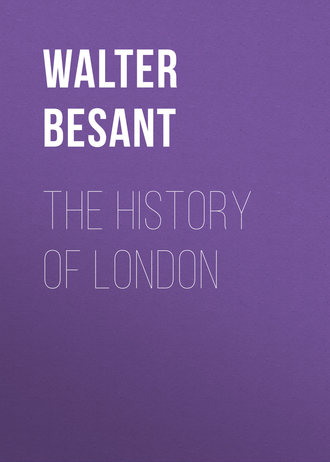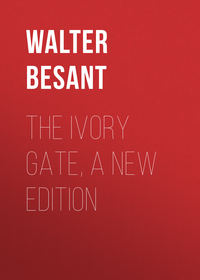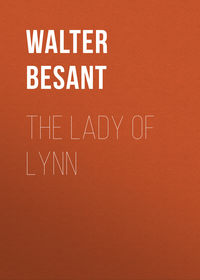 полная версия
полная версияThe History of London
In the middle ages the mysterious disease called leprosy was an ever present terror. Other plagues appeared at intervals and disappeared. Leprosy remained. It never left the land. It struck the King on his Throne, the Bishop in his Cathedral, the Abbess in her Nunnery, the soldier in camp, the merchant in his counting house, the sailor at sea. No class could escape it. Robert Bruce died of it; Orivalle, Bishop of London, died of it; Baldwin, King of Jerusalem, died of it. To this day it prevails in India, at the Cape, in the Pacific Islands, while there are occasional cases found in our own hospitals. The disease was incurable: the man, woman, or child, attacked by it would surely and slowly die of it. The leper was unclean: he was thrust out of the town: he had to live apart, or congregated in hospitals with other wretches similarly afflicted: if he walked abroad he wore a grey gown for distinction and carried a clapper as he went along, crying 'Unclean, Unclean,' so that the people might stand aside and not so much as touch his garments. And since he could not work with his hands, he was permitted to carry into the market a 'clap dish,' that is to say, a bowl or basin in which to receive food and alms.2
Leprosy is supposed to have had its origin in Egypt: the laws laid down in the Book of Leviticus for the separation of lepers are stringent and precise: it was believed, partly, no doubt, on account of these statutes in the Book of the Jewish Law, that the disease was brought into Western Europe by the Crusaders; but this was erroneous, because it was in this country before the Crusaders. Thus the Palace of St. James stands upon the site of a lazar house founded before the Conquest for fourteen leprous maidens.
This is not the place to describe the symptoms and the results of this dreadful disease. Suffice it to say that the skin thickens, is discoloured and ulcerates: that the limbs swell: that the fingers and toes drop off: that the voice sinks to a whisper: and that the sufferer's mind is weakened by his malady.
The fearful scourge was so prevalent that there was not a town, hardly a village, in any country of Europe which had not, in those centuries, its lepers and its lazar house, great or small. Every effort was made to isolate them: they were not allowed to worship with the rest of the people: they were provided with a separate building or chapel where, through a hole in the wall, they could look on at the performance of mass. And in addition, as you have seen, they lived apart and took their food apart.
As for their houses – the lazar houses – the chief of them all, the place where Abbot possessed some kind of authority over the others, was one built in a village near Melton Mowbray called Burton Lazars. The Hospital of St. Giles, for instance, became shortly after its foundation a 'cell,' or dependency, of this House.
Whatever the cause of this malady, whether it be contagious, i.e. communicated by touch; or infectious, that is, communicated by breathing the same air; or hereditary; it is quite certain that it was greatly aggravated by the habits of the time. Bad food, uncleanly habits, bad air, all contributed to the spread of leprosy. Especially it has been considered that the long fasts during which meat was prohibited encouraged the disease: not because abstinence from meat is in itself a bad thing, but because the people had to eat fish imperfectly cured or kept too long, and unwholesome. Fresh-water fish could not be procured in sufficient quantities and it was impossible to convey fish from the sea more than a certain distance inland.
The dreadful appearance of the lepers, their horrible sufferings, produced loathing more than pity. People were horror stricken at the sight of them: they drove them out of their sight: they punished them cruelly if they broke the rules of separation: they imprisoned any citizen who should harbour a leper: they kept bailiffs at the City gates to keep them from entering. Fourteen of these afflicted persons were required to be maintained in accordance with Queen Maud's Foundation by the Hospital of St. Giles: there was also a lazar house in the Old Kent Road, Southwark: one between Mile End and Bow: one at Kingsland between Shoreditch and Stoke Newington: one at Knightsbridge, west of Charing Cross, and one at Holloway.
On the Dissolution of the Monasteries, all these lazar houses were suppressed. Now, since we hear very little more about lepers, and since no new lazar houses were built, and since the prohibitions to enter churches, towns, &c., are no more renewed, it is tolerably certain that leprosy by the middle of the sixteenth century had practically disappeared. The above will show, however, how great and terrible a thing it was between the ninth and the sixteenth centuries.
22. THE TERROR OF FAMINE
Suppose that all the ocean traffic were stopped; that there was no communication, or exchange of commodities, between our country and another; suppose that the people of this island depended entirely on their own harvests and their own cattle for their support. You would then easily understand how a single bad year might produce scarcity of food, and a very bad year might produce a famine. That was our condition down to the fifteenth century. Some corn may have been brought over from Prussia or from Hamburg; but there was no regular supply; the country depended on its own harvests. Therefore, the fear of a famine – or of scarcity – was ever present to the people.
Many of these famines are on record. In the year 990 a famine raged over the whole of England; in 1126 there was a terrible scarcity. Wheat was sold at 6s. a horseload. Now, in the twelfth century a shilling meant more than a pound of our money, in purchasing power. It is not stated how much constituted a horseload. It would probably mean the filling of the two baskets hanging on either side of the packhorse. In 1257, after a wet season and a bad harvest, wheat rose to 24s. a quarter, a price which prohibited all but the richest from eating wheaten bread. It is said that 20,000 perished of starvation. In 1316, after the same cause, wheat became so scarce that its price rose to 4l. a quarter. So great was the distress this year, that great nobles had to dismiss their retainers; the roads in the country were crowded with robbers. Robberies were openly committed in the streets for the sake of food: in the prisons the unfortunate criminals, left to starve, murdered and devoured each other. The people ate carrion and dead dogs. In 1335 there was another time of scarcity and suffering; in 1439, the distress was so great that the people made bread of fern roots and ivy berries. Then, for the first time, we read of the famine being assuaged by the arrival of rye from Prussia. In 1527 a threatened famine was checked by the Hanseatic merchants who gave, or sold, a hundred quarters of wheat to the City and sent three ships to Dantzig for more. In 1593 and in 1597 wheat rose to an enormous price. The last time of scarcity was during the long war with France, which lasted, from 1792 to 1815, nearly a quarter of a century. We were then compelled to depend almost entirely upon our own harvests. Wheat went up as high as 103s. a quarter.
At no time did the poorer classes depend much upon wheat. Rye and oats made the bread of the working people. But bad harvests affected rye and oats as much as wheat.
The famine prices of wheat may be explained by the following facts. In the reign of Henry I., at ordinary prices, bread enough for one meal for 100 men could be bought for a shilling and a whole sheep cost fourpence. In the next century, when wheat was at 6s. a quarter, a farthing loaf was to weigh 24 oz. whole meal and 16 oz. white. When it was at 1s. 6d. a quarter the farthing loaf was to weigh 96 oz. whole grain and 64 oz. white. The quartern loaf of 4 lb. or 64 oz. now costs 5d., wheat being very cheap. So that prices in time of plenty being supposed the same, money was worth twenty times in that century as much as it is worth now. In the reign of Edward I. wheat went down to 1s. a quarter.
The food of the craftsmen in London was, in ordinary times, plentiful and cheap. The City, as we have seen, was always remarkable for the great abundance of provision which was brought there. And there is every reason to believe that while the rustic fared poorly and was underfed, the craftsman of the towns always enjoyed good food and enough of it. This made a time of scarcity hard to bear for one who habitually lived well.
Once or twice an attempt was made to provide the City with granaries in case of famine. Thus the origin of Leadenhall, the great City market, was the erecting of a public granary here by Sir Simon Eyre in 1419. Attached to the Hall, after the manner of the time, was a chapel dedicated to the Holy Trinity, which the founder endowed for 60 priests who were to prepare service every day for those who frequented the market.
Another public granary was established in 1610 at Bridewell Palace. This was built to contain 6,000 quarters of wheat.
Nothing more is heard about these public granaries. Probably the public mind grew more assured on the subject of famine as it became better understood that the loss of one country might be made up from the superfluous harvests of another. The lesson taught by the Hanseatic merchants in sending to Prussia for corn was not likely to be lost.
At the present moment, with means of transport always in readiness and the electric wire joining the most distant countries, it might seem that famine was a thing no longer to be feared. There cannot be bad harvests all over the world. Not only can we every year import so much wheat that we need grow little in this country, but we import frozen meat in vast quantities: we bring fruit of all kinds from the most distant countries, insomuch that there are some fruits, such as apples, oranges, grapes, bananas, which we can enjoy the whole year round. But famine may yet play a great and a disastrous part in our history. We must not forget that we enjoy our present abundance of all things on one of two conditions; first, that we are strong enough to protect the waterway and keep it open, or, secondly, that we remain at peace. The latter we cannot hope to do always. Therefore it is of vital importance that we maintain a strong fleet, well equipped, ready to fight, at all times and at the shortest notice, superior to any likely combination that may be brought against us. Therefore, again, it behoves every man in these Isles to be jealous of the fleet, for a time may come when the way of the ocean may be closed and when Great Britain, through the neglect of her rulers, may be starved into a shameful and ruinous surrender.
23. ST. PAUL'S CATHEDRAL
PART IWhen London was converted to Christianity, in the year 610, the first Bishop of London, Mellitus, built a church on the highest ground within the walls of the City. This church he dedicated to St. Paul the Apostle who first preached to the Gentiles. What kind of church this was – whether great or small – whether of wood or of stone – how often rebuilt or repaired – we know not. Probably it was quite a small church at first. This church, or its successor, was taken down in the year 1087 when Bishop Maurice began to build a new and far more stately Cathedral. Fifty years later most of the church, not yet completed, was burned down. Its building, thus delayed, was continued for nearly two centuries. The steeple was not completed, for instance, till a hundred and fifty years after the commencement of the building. The drawing shows the church as it was in the fourteenth and fifteenth centuries. Old St. Paul's was one of the largest churches in Europe: its length was at least 600 feet; the spire reached the height of 460 feet. The church stood in a large walled enclosure, still kept partly open, though the wall has long since been pulled down and there have been encroachments on the north side.
The church in the fourteenth century was not regarded only as a place for public worship. Masses and services of all kinds were going on all day long: the place was bright, not only with the sunlight streaming through the painted glass, but with wax tapers burning before many a shrine – at some, all day and all night. People came to the church to walk about, for rest, for conversation, for the transaction of business – to make or receive payments: to hire servants. The middle aisle of the church where all this was done was called Paul's Walk or Duke Humphrey's Walk. Here were tables where twelve licensed scribes sat writing letters for those who wanted their services. They would also prepare a lease, a deed, a conveyance – any legal document. The church was filled with tombs and monuments, some of these very ancient, some of the greatest interest. Here was one called the tomb of Duke Humphrey – Humphrey Duke of Gloucester, who was really buried at St. Alban's. On May Day the watermen used to come to St. Paul's in order to sprinkle water and strew herbs upon this tomb – I know not why. Those who were out of work and went dinnerless were said to dine with Duke Humphrey: and there was a proverb – 'Trash and trumpery is the way to Duke Humphrey.' Trumpery being used in its original meaning —tromperie—deceit. Among other tombs there were those of the Saxon Kings Sebbi and Ethelred. The first of these was King of the East Saxons. He was converted by Bishop Erkenwald. The second was the elder brother of King Alfred. There were tombs or shrines to many saints now forgotten – that of St. Erkenwald, whose fame rivalled that of Edward the Confessor at Westminster, St. Cuthbert at Durham, and St. Thomas à Becket at Canterbury: that of St. Ethelbert: that of St. Roger, Bishop of London – a cope which St. Roger wore is still preserved in the Sacristy: and that of St. Wilford. At every one of these shrines miracles were wrought – or believed to be wrought. There was also a miraculous crucifix said to have been discovered by Lucius, the first Christian King of ancient Britain in the year 140. Great gifts were constantly made to this crucifix.
Under the Cathedral, in the crypt, was a parish church – that of St. Faith's – it is now united with the parish church of St. Augustine's in Watling Street.
Outside the church, almost against the south wall, was the parish church of St. Gregory. In the same way the parish church of St. Margaret's stands outside Westminster Abbey. Within, we can see, in imagination, the people walking about – they have not yet begun to stand bareheaded in church – some dictating to the scribes: some leaning against the tombs: some sitting on the bases of the great round pillars – there were no pews, benches, or chairs in the Cathedral: the chantry priests are saying masses in the chapels: the people are kneeling before the golden shrine of St. Erkenwald, resplendent with lights, jewels, gold, and silver: women lay their offerings before the miraculous crucifix praying for the restoration to health of son or husband: a wedding is celebrated in one chapel: a funeral mass is being said in another: servants gather about a certain pillar waiting to be hired: porters carrying baskets on their heads enter at the north door and tramp through, going out of the south: processions of priests and choir pass up and down the aisles: the organ peals and echoes along the long and lofty roof. See; here comes a troop of men. They carry instruments of music: they are dressed in a livery, a cloak of green: they march together entering at the western doors and tramping through the whole length of the church to the chapel of Our Lady in the East. This is the Guild of the Minstrels. There were many other guilds attached to the Cathedral. You shall learn presently what was the meaning of these guilds.
24. ST. PAUL'S CATHEDRAL
PART IISuch was Paul's in the fifteenth century. In the sixteenth the Reformation came. The candles were all put out; the shrines were destroyed; the altars were taken out of the chapels: the miraculous images were taken away: the church, compared with its previous condition, became a shell. The choir was walled off for public worship: the rest of the church became a place of public resort: the poets of the time are full of allusions to Paul's Walk. It was a common thoroughfare even for men leading pack horses and asses. The Cathedral, left to neglect, began to fall into a ruinous condition. An attempt was made at restoration: funds were collected, but they came in slowly. Laud, who became Bishop of London in 1631, gave an impetus to the work: the celebrated Inigo Jones was appointed architect: in order to prevent the church from being turned into an Exchange, he built a West Porch, which is shown in some of the pictures of St. Paul's. In the time of the Commonwealth this portico was let off in shops and stalls: the nave of the church actually became a cavalry barrack.
When King Charles returned it was resolved to repair and restore the cathedral, by this time almost in ruins: but while the citizens were considering what should be done, the Great Fire of London settled the question by burning down all that was left.
Then Christopher Wren began the present building. The first stone was laid on June 21, 1675, nine years after the Fire. Divine service was performed on December 2, 1697, the day of thanksgiving for the Peace of Ryswick. The work was completed in 1710, thirty-five years after its commencement. The present church is 100 feet shorter than its predecessor: its dome is also 100 feet lower than the former spire. The grandeur of the building cannot be appreciated by any near view, because the houses block it in on all sides, and the former view from the bottom of Ludgate Hill is now spoiled by the railway bridge. Those who wish to see what St. Paul's really is – how splendid a church it is – how grandly it stands above the whole City – must cross the river and look at it from Bankside, Southwark.
The dome is three fold: it consists of an outer casing of wood covered with lead: a cone of bricks which supports the lantern and cross: and an inner cupola of brick which supports nothing. The towers at the west end are 222 feet in height.
St. Paul's, especially since the crowding at Westminster Abbey, is becoming the National Burial Church. It is already well filled with monuments of British worthies and heroes of this and the last century. Of men distinguished in Literature, Art, and Science, there are buried here Dr. Johnson, Hallam the historian, Sir Joshua Reynolds the painter, Turner the painter, Rennie the engineer who built Waterloo Bridge, Sir William Jones, the great Oriental scholar, and Sir Astley Cooper, the great surgeon. There is also buried here, as he should be, Sir Christopher Wren himself. But those who visit the Cathedral desire most to see the tombs of Wellington and Nelson. The remains of the former lie in a great sarcophagus worked out of a single piece of Cornish porphyry. Those of the Admiral were placed first in a coffin made from the main mast of the French ship Orient, taken at the Battle of the Nile. This was deposited in a sarcophagus made by Cardinal Wolsey and intended for the burial of King Henry the Eighth. In the Cathedral, too, you will find the monuments of those splendid fighting men, Lord Collingwood, Nelson's friend: Howe and Rodney: Earl St. Vincent, who won the battle of Cape St. Vincent: Lord Duncan of Camperdown, and many others.
In the crypt you will find, if you look for it, the brass tablet which marks the spot where lie the remains of a man whose history should be an encouragement to every boy who reads this book. His name was Edward Palmer. Born without family influence, plainly educated at the grammar school of his town, he taught himself in the teeth of all difficulties – that of bad health especially – Arabic, Persian, and all the languages which belong to that group: at the age of twenty-four he was so splendid an Oriental scholar that the greatest Orientalist at Cambridge declared that he could teach him nothing. He was elected to a Fellowship at St. John's College and became the Lord Almoner's Professor of Arabic. He mastered, in addition to his Oriental studies, all the European languages except Russian and the Slavonic group. He explored the Desert of the Exodus and the Peninsula of Sinai. He did a great deal of literary work. But he was not buried in St. Paul's Cathedral for these studies. In the year 1882, when the Egyptian War broke out, he was sent on a secret mission to the tribes of the Desert. He knew them all: he could talk their language as well as his own: he was the equal of any one in his knowledge of Arabic poetry and his power of telling stories: they welcomed him with open arms: the service that he rendered to his country for which he was honoured with a funeral at St. Paul's, was that he prevented these tribes from destroying the Suez Canal. He succeeded in reaching the British camp at Suez in safety, his task accomplished, the safety of the Canal assured. He was murdered in return by a party of Egyptian Arabs sent from Cairo. His bones were recovered by Sir Charles Warren – who further tracked down and hanged every man connected with the murder. The road to possible greatness lies open to all, but the way leads through a difficult and thorny way only to be passed, as Palmer found, by resolution invincible and by long patient industry.
25. PAUL'S CHURCHYARD
St. Paul's Cathedral stood in the centre of an oval-shaped enclosure very much like the present St. Paul's Churchyard, save that the houses now in the north are an encroachment. This open space was surrounded by a wall, in which were six gates embattled. The first was the Great Western Gate, facing Ludgate Hill: the second in Paul's Alley in Paternoster Row: the third at Canon Alley: the fourth, or Little Gate, where is now the entrance into Cheapside: the fifth, St. Augustine's Gate, Watling Street: the sixth at Paul's Chain.
Walking round this enclosure we come first upon the Bishop's Palace, standing on the north side of the Nave. The Palace was provided with a private entrance into the Cathedral. Beyond the Palace was a very beautiful cloister called Pardon Church Haugh. In this cloister stood a chapel built by Gilbert, father of Thomas à Becket. Many monuments and tombs of great persons stood within this cloister, which was also remarkable for its 'Dances of Death.' This was a series of paintings representing Death as a skeleton armed with a dart, leading by the hand men and women of every degree, from the highest to the lowest. There were formerly many examples of such dances. Next to the cloister was the library, the catalogue of which still exists to show what a scholar's collection of books then meant. Next to the library stood the College of the Minor Canons: then came Charnel Chapel, beneath which was a crypt filled with human bones taken from the churchyard. Remember that this has been a burial place ever since the year 610, when a church was first built here. From the year 610 till the year 1840, or for a period of 1,200 years, new graves were continually made in this ground. Who can guess how many thousands lie buried here? Every handful of the dust is a handful of human remains. From time to time, however, the bones were collected and placed in this crypt of Charnel Chapel. The chapel itself was apparently a large building, for when it was pulled down the materials were used by the Duke of Somerset at the Reformation in building Somerset House in the Strand. There are yet standing some portions of the original house, so that the stones of Charnel Chapel may still be seen. As for the crypt, they carried away the bones, which made a thousand cartloads, and laid them over Finsbury Fields, covering them with ground, on which were erected three windmills. The site is marked by the street called Windmill Street.
Next to Charnel Chapel stood the famous Paul's Cross.
This famous place was a Pulpit Cross, from which sermons might be preached in the open air. Several London churches had their open-air pulpits: notably St. Michael's, Cornhill; St. Mary's Spital, without Bishopsgate – at this Cross a sermon was preached every Easter to the Lord Mayor and aldermen. When Paul's Cross was erected is not known: it probably stood on the site of some scaffold or steps, from which the people were anciently harangued, for this was the place of the folk-mote, or meeting of the people. Here were read aloud, and proclaimed, the King's Laws and Orders: here the people were informed of War and Peace: here Papal Bulls were read. There was a cross standing here in the year 1256 – very likely it was already ancient. In the year 1387 it was ruinous and had to be repaired. It was again repaired or rebuilt in 1480. Paul's Cross played a very important part in the Reformation. Here the 'Rood' of Bexley, which was a crucifix where the eyes and lips were made to move and the people were taught that it was miraculous, was exposed and broken to pieces: here the famous images of Walsingham and Ipswich, the object of so many pilgrimages, were brought to be broken to pieces before the eyes of the people. Here Latimer preached, a man of the people who could speak to them in a way to make them understand. Had it not been for the preaching of Latimer and others like him in plain language, the Reformation would have been an attempt, and probably a failure, to enforce upon the people the opinions of certain scholars. Paul's Cross did not perish in the Fire: it was taken down in the year 1643, or thereabouts, in order to be rebuilt; but this was not done, and when the Fire destroyed the Cathedral Paul's Cross was forgotten. Its site may be seen in the churchyard at the N.E. corner of the choir, marked by a flat stone, but it must be remembered that the old church was wider but farther south.











